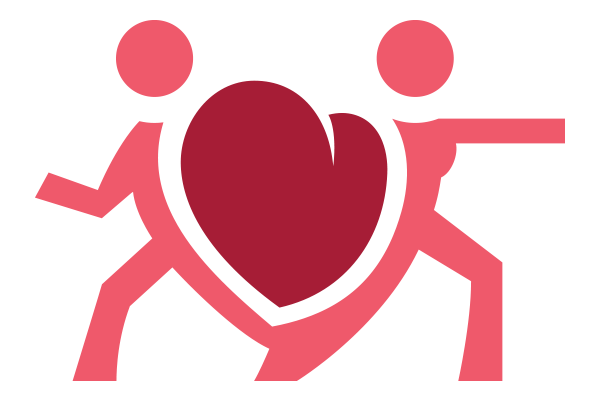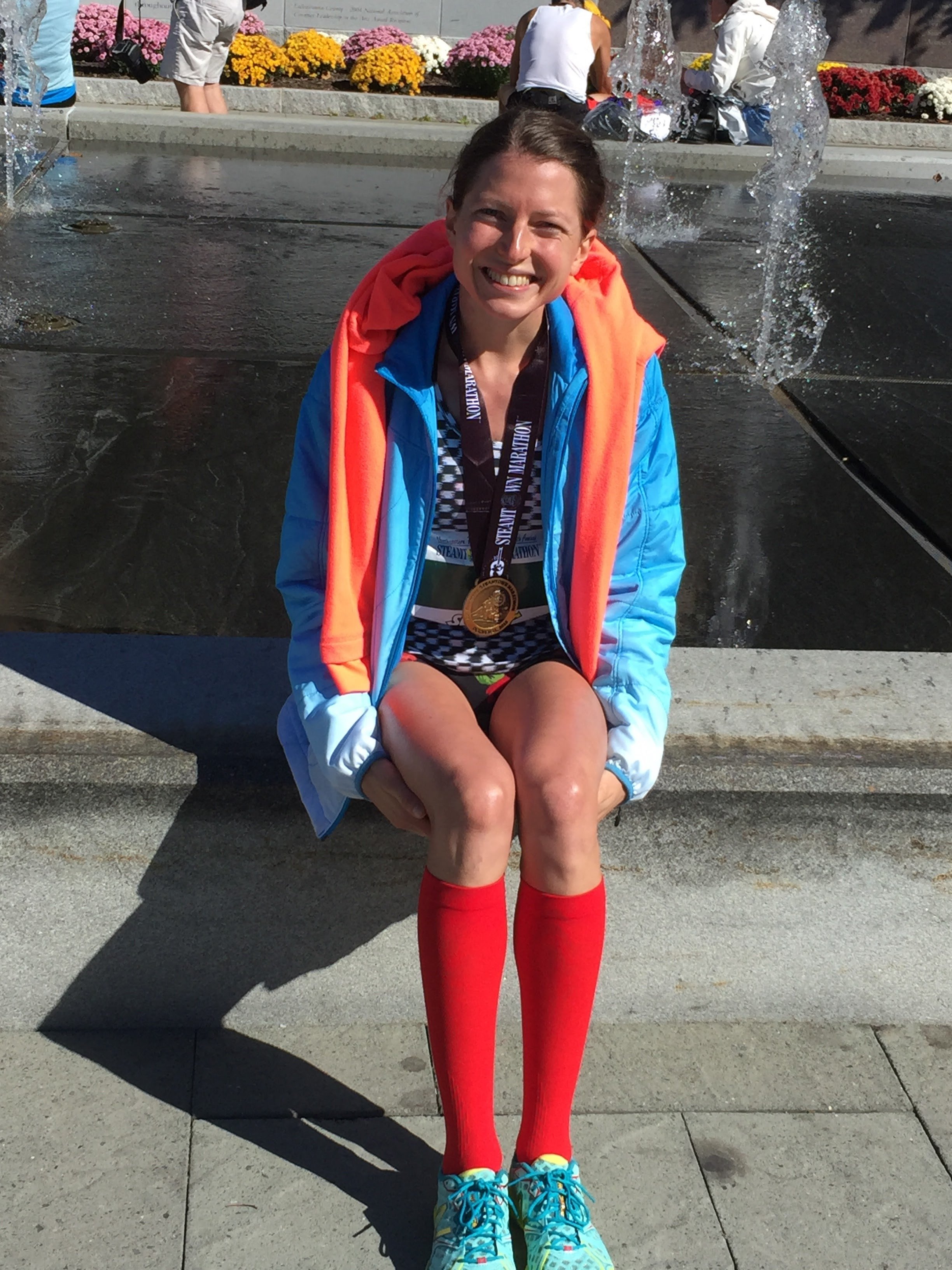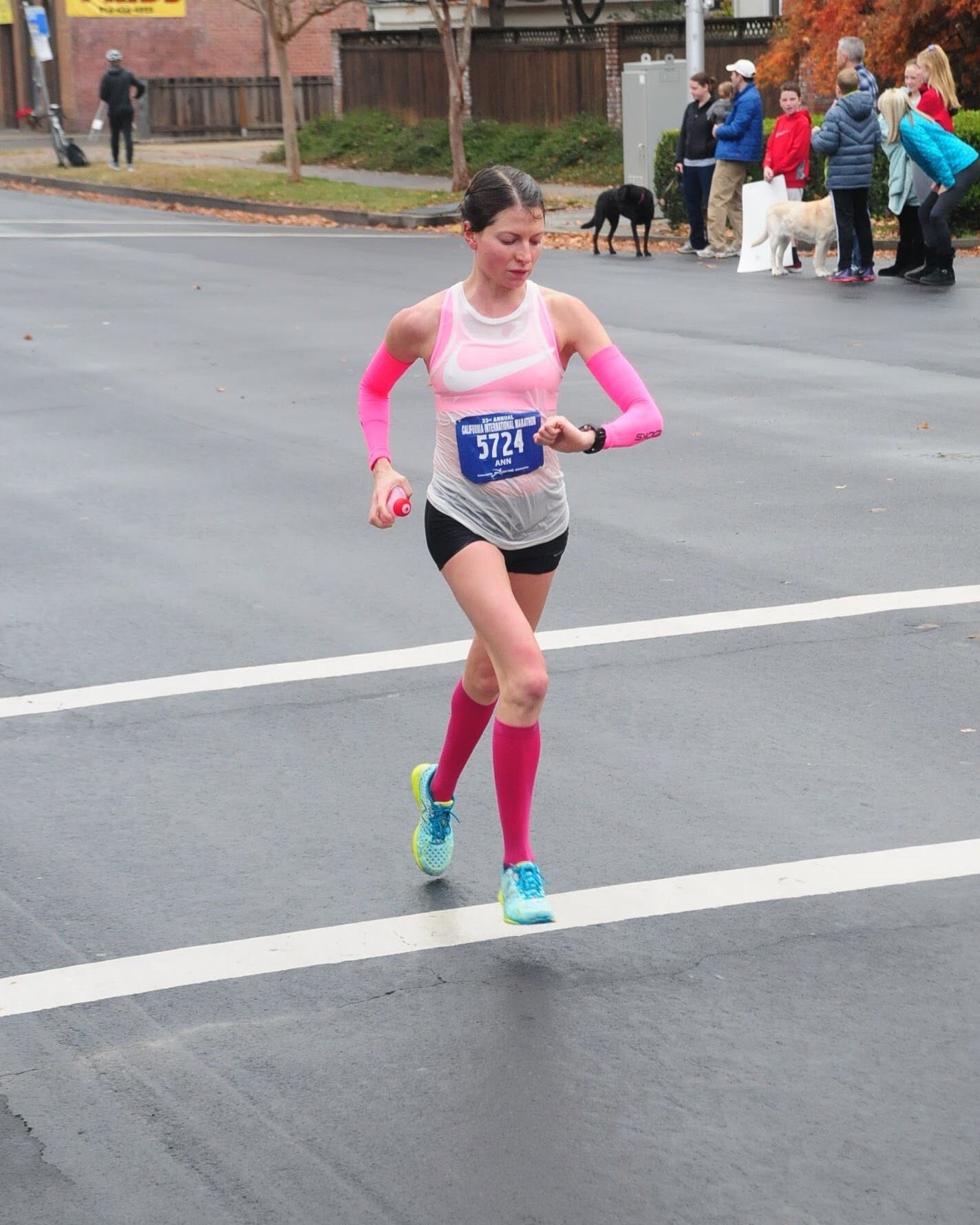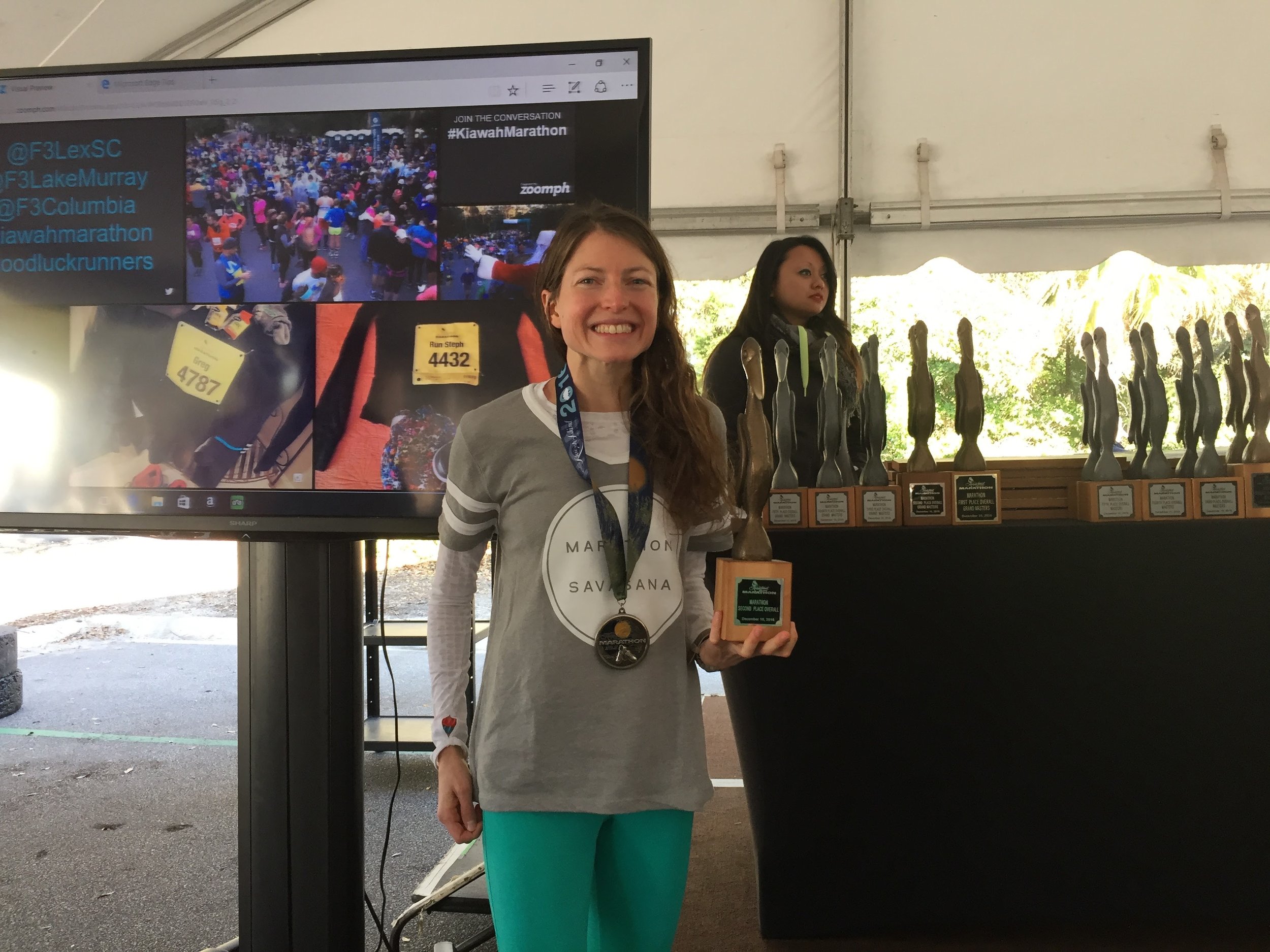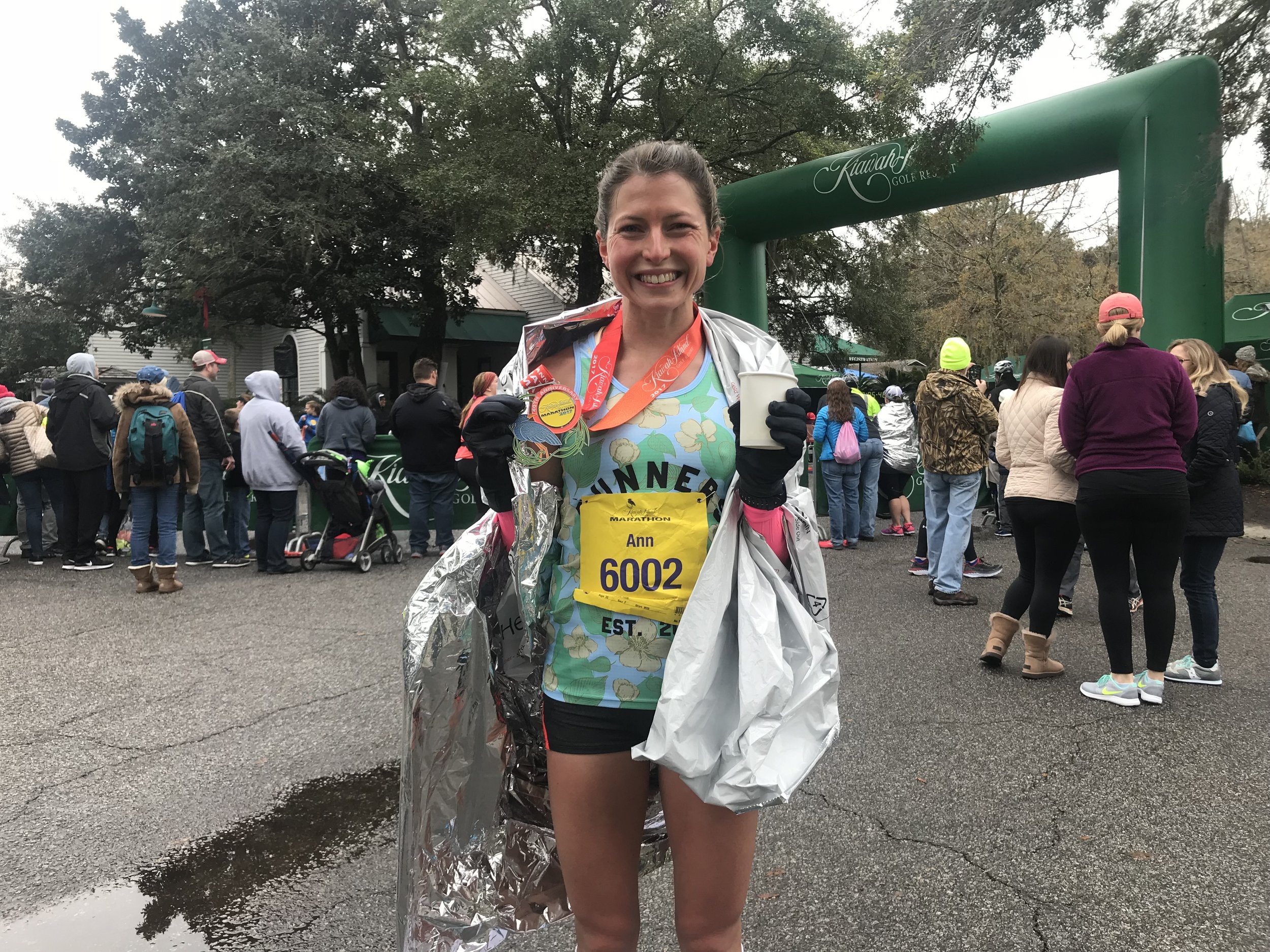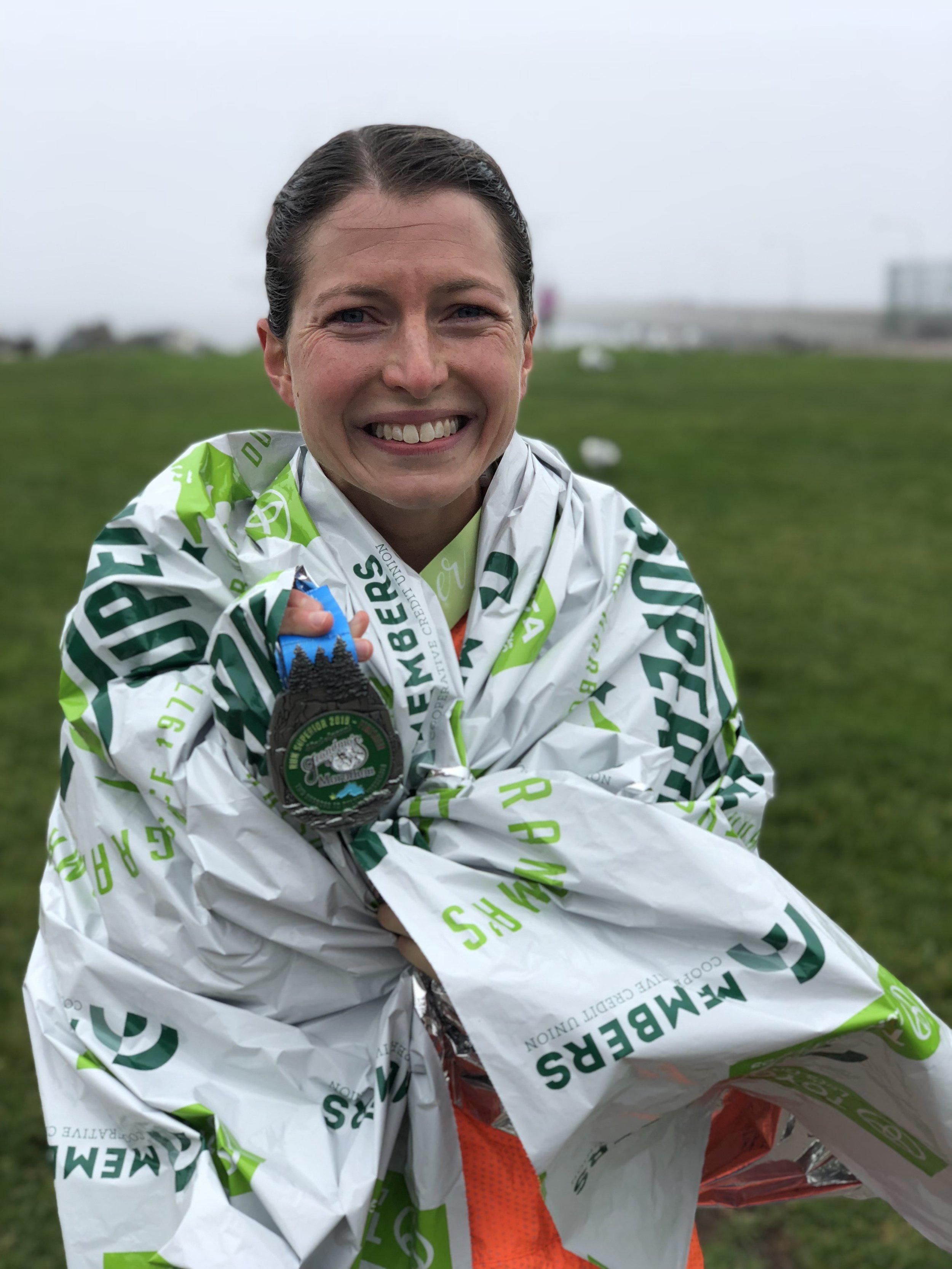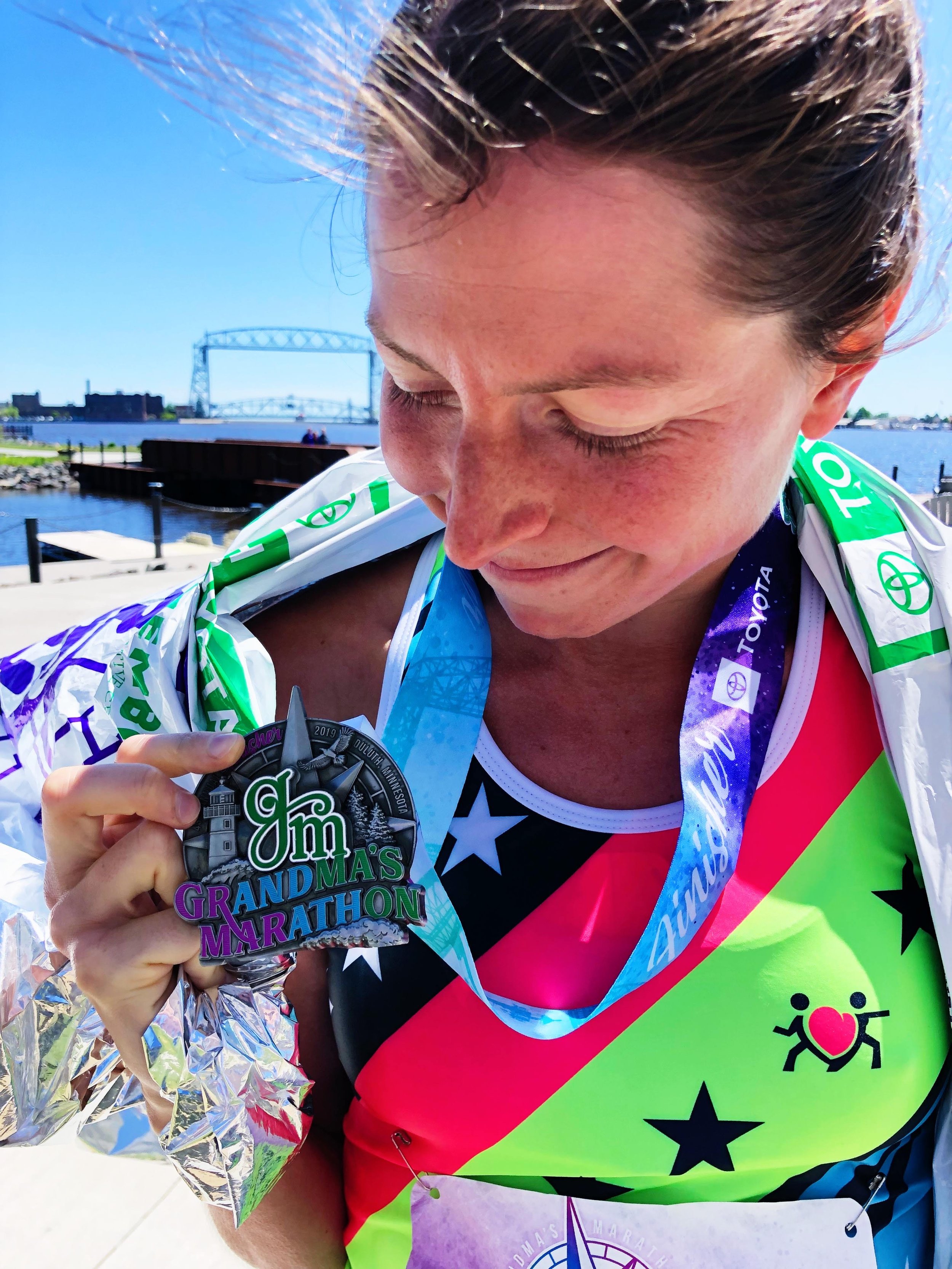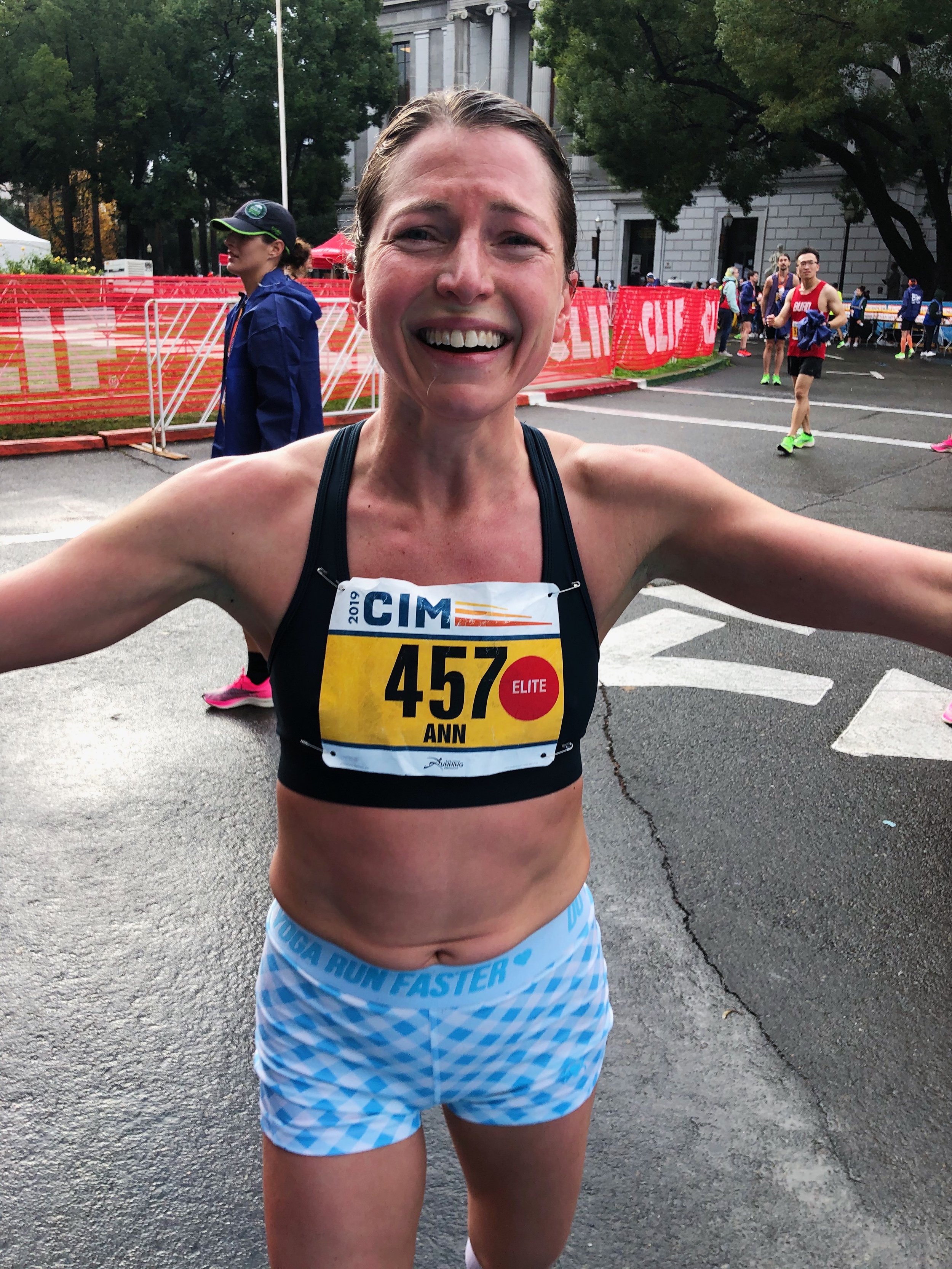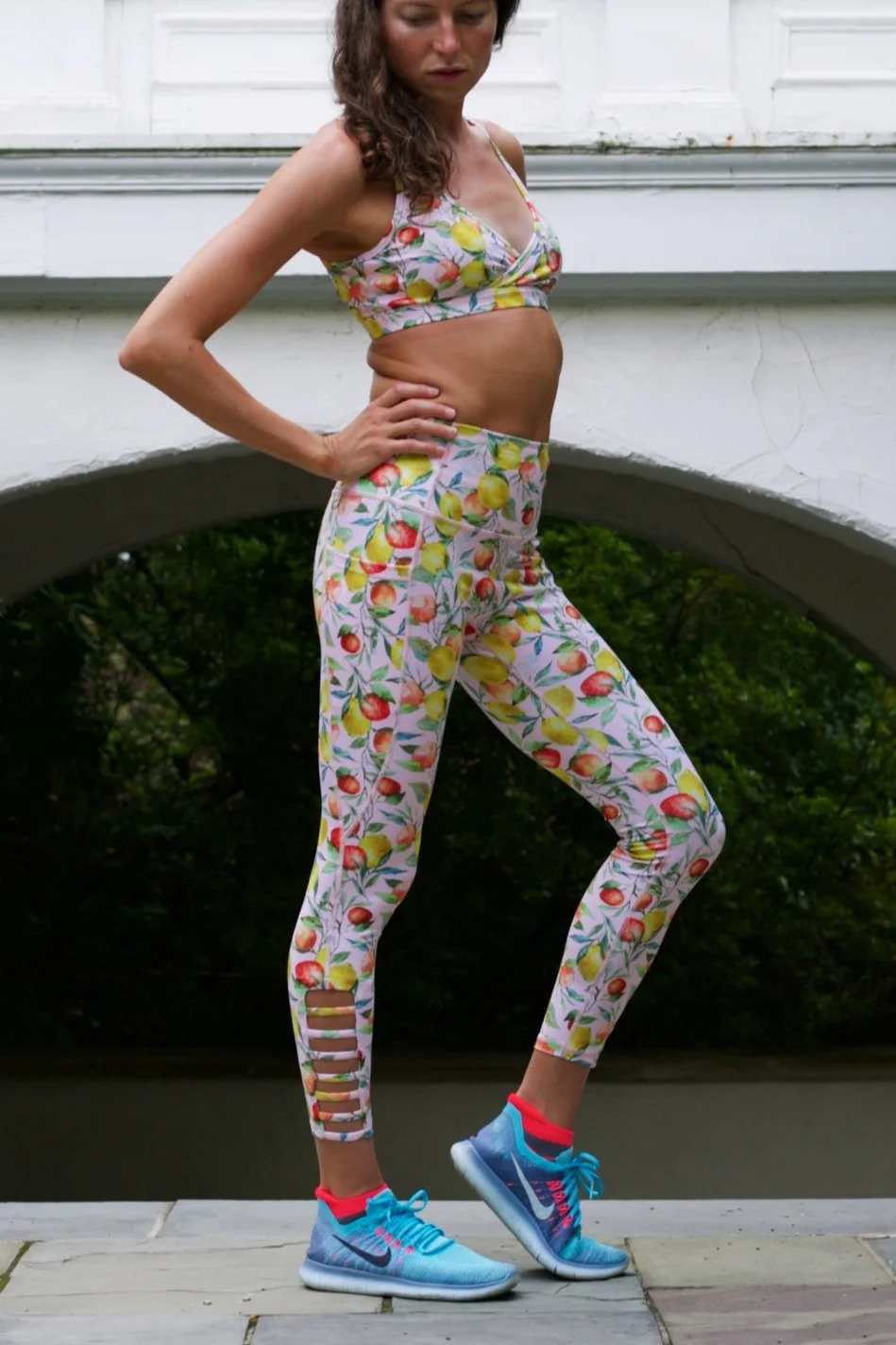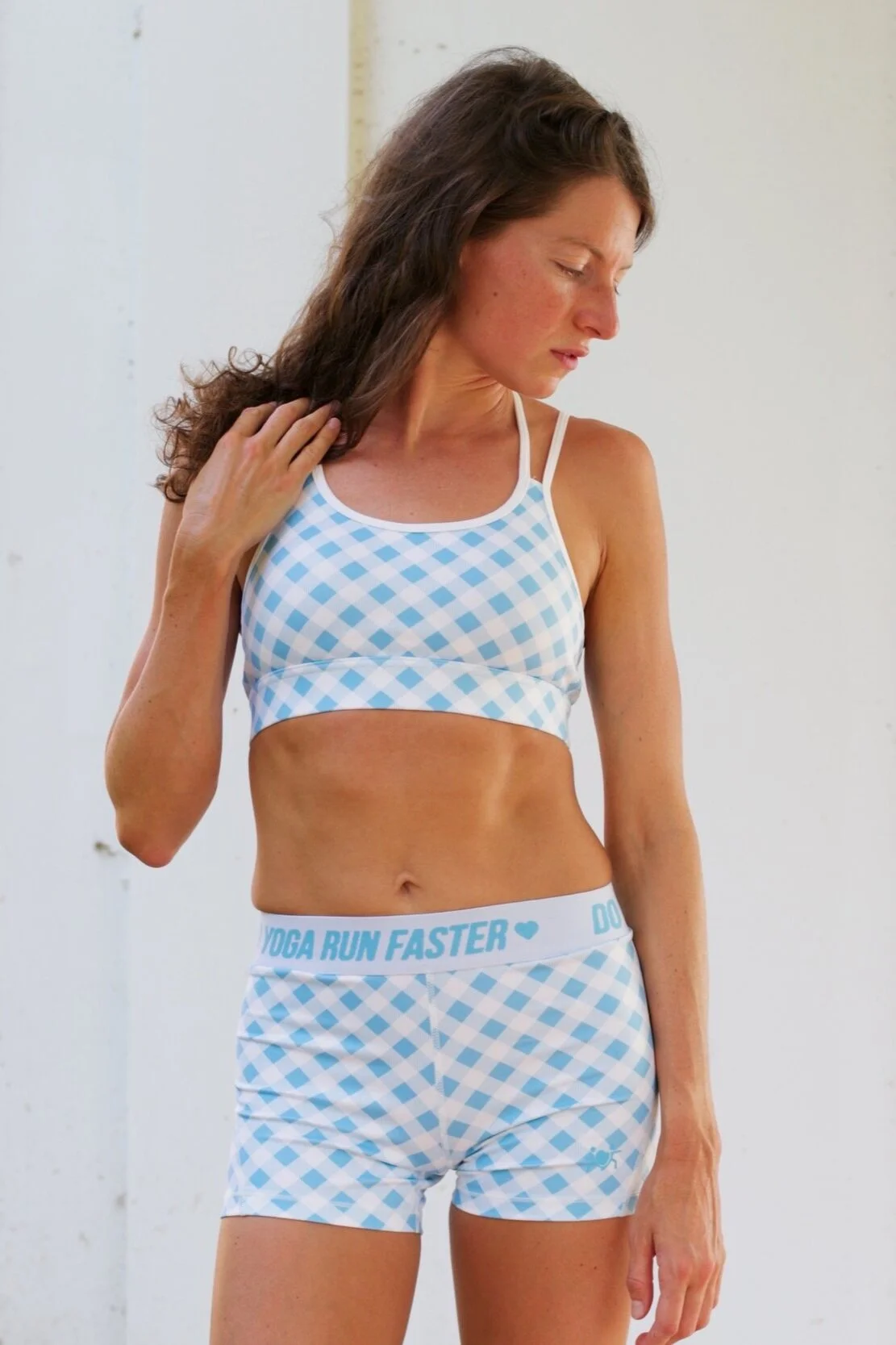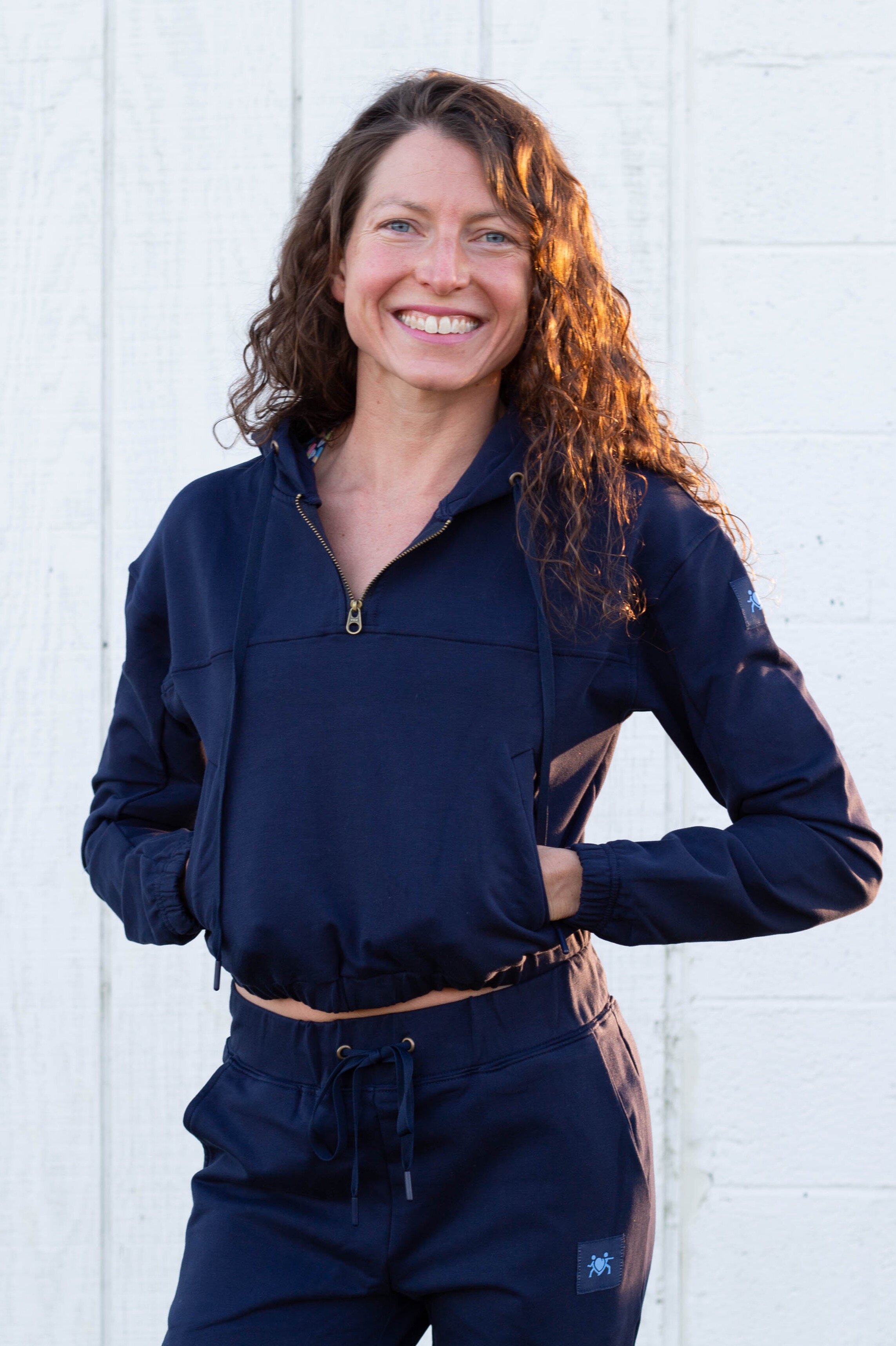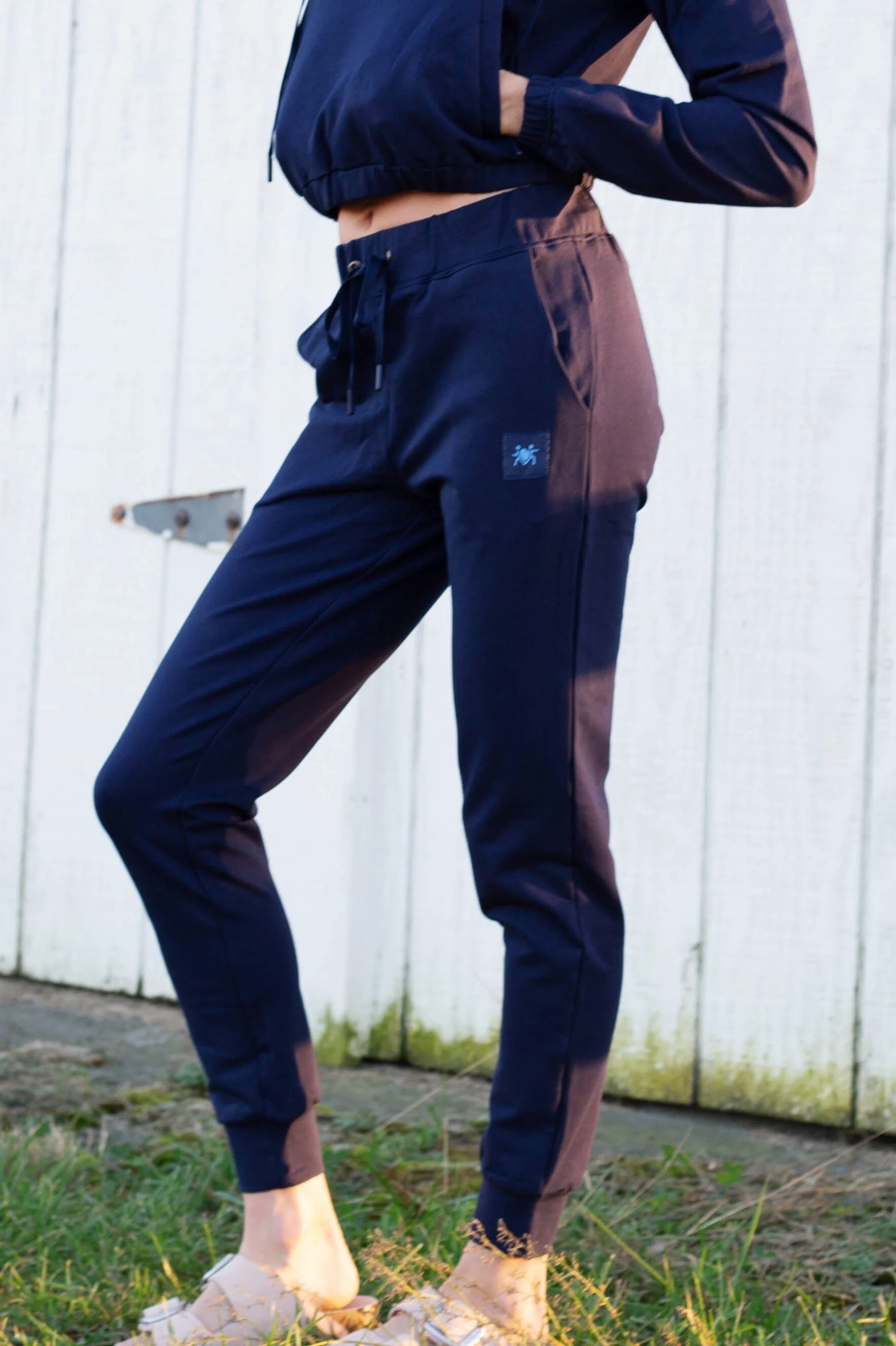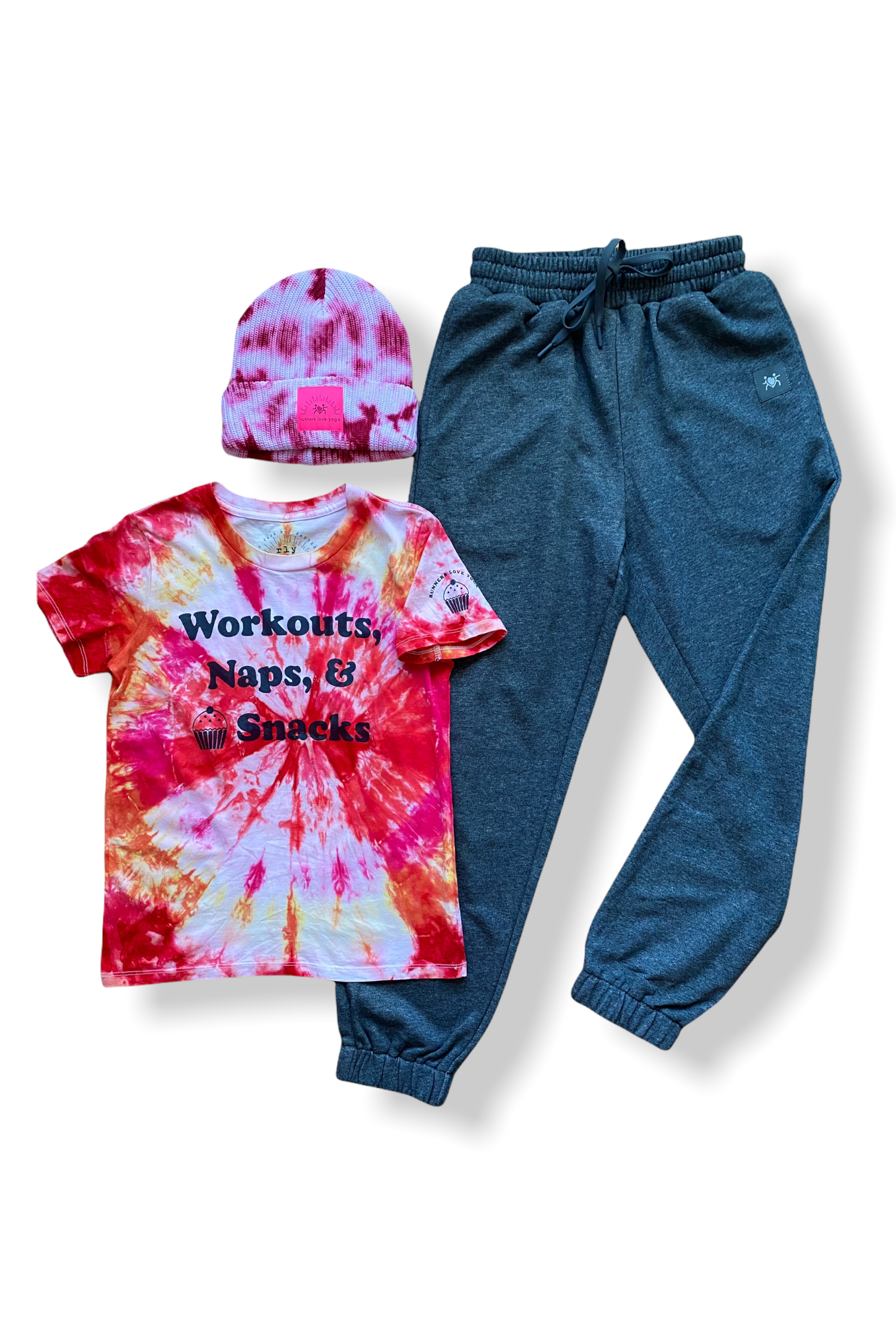Many Thoughts on Marathoning and OTQing: from 3:17 to 2:44
A few times over the past year or so, I have thought to myself about how short 15 seconds actually really is, especially while running. On any given run, how almost absurdly easy would it be to go either :15 slower or faster than you did over the course of the whole run?
On Dec. 8, 2019, I qualified for the 2020 Olympic Trials by running 2:44:45, or just :15 under the 2:45:00 standard. Of course, the difference between that incredible marathon day and any average run is that on THAT DAY, I was laser focused on “running the red line" (as the pacers called it!) to hit *just* under that 2:45. By far, it was the most even paced marathon I had ever run: every 5k split was 6:17/mile with the exception of one 5k at 6:16 and one at 6:18.
I can almost barely describe what it was like to cross that finish line knowing that I had qualified for Olympic Trials. The marathon provides a lot of opportunities to think. If you think too hard or too much about the pain that you are in, or about what you are about to possibly do—I almost cannot emphasize how especially true this is if you are one of those on-the-cusp of qualifying runners like I was during those 2 hours 44 minutes and 45 seconds—the intensity of emotions that you experience over that great length of time can become almost unbearable. Making it to the finish line and qualifying was truly one of the happiest MOMENTS of my life. I will never forget until the day I die what it was like to run that day, and to see those last signs tick by: “400m to go,” “200m to go,” until finally, the finish line was in front of me, and like I was in the best running dream that I ever could have dreamt up, I was crossing that line ecstatic, into the cheers of the other women who had made it and were jumping up and down. If we are thinking about the ability of sports to get at something powerful about the human experience, it might be those couple minutes right before that 2:45:00 window closed where a small group of women saw their individual lifetime dreams come true together, in the same space and time.
My Journey into the Marathon Over Nearly a Decade:
Boston 2011: I did not run this race (and have never run Boston), but my best friend qualified for 2012 Trials by running a 2:44 and I basically lost my mind with excitement. I still remember my text to her which went something like “hkjdlsahflhwaeislbfiea!!!!! I AM SO EXCITED FOR YOU!!!! [insert more exclamation marks here]” Never in a million years did anyone—including me—think that I would be able to do the same thing nine years down the line in 2020.
In 2012, I ran my first marathon. It was a 3:17. I made the amateur mistake of wearing my 5k flats (whoopsie!) and having unbearable calf cramps for the last 7 miles or so, resulting in my basically running on my tip toes to minimize pain. It was not pretty and did not feel pretty either! Vivid memory: after the race, I sat down. I then could not use my legs to stand up but had to press my palms into the tabletop to get to standing again.
In 2014, I ran a 3:00:20. That 20 seconds above 3:00 really annoyed me! I knew I could be faster than that. Enter quest to run sub-3:00.
Somewhere around this time, I read Teal Burrell’s blog post where she described the race where she qualified for ’16 Trials and remember crying at my computer.
In 2015, sub-3:00 mission began. I ran what is still the most painful marathon of my life at Steamtown which included quad cramps near the halfway point. I literally had tears coming down my face just from leg pain in the last mile or two. Thankfully the finish was no further away than it was!! Ran 3:03:21. This was in October. I was so disappointed to not break 3 hours so I set out to run another marathon as soon as physically possible in order to end the season on a better note. Enter: plan to run CIM! (This, by the way, was before CIM was popular! Yes, I know I sound like one of those people who loves a band before everyone knows who they are, but truly, I have been a big CIM fan for a good long while! Yay California in December!) CIM: ran 2:57:17. Felt comparatively easy! Things came together! Could have pushed it more but was a little wary of random muscles (I think it was a hamstring feeling tightish?) in the last several miles. Sub-3:00 achievement unlocked!
2016 and 2017: ran the Kiawah Island Marathon and went 2:57:26 to get second woman overall, and then 2:52:47 the next year to win! Note: Kiawah could be a much faster marathon than it is. The course is largely on golf cart paths which are quite winding, rather than the immediately adjacent road, and this becomes taxing after a while to do so many turns. The faster marathoners also run into the half marathon walkers which is a big problem. Fix these two things and you basically have a CIM of the East. (In conversations with my two best running friends, we are all wondering who is going to be smart enough to bring a fast fall marathon to the East Coast?) The year I ran 2:57, I was really on the fence about whether to run the half or the full: I really had only been running 30 miles/week! Neither my husband nor I afterwards could quite believe that I had broken 3:00 on the training that I had done. (Note: I do not recommend this. Do your long runs! The recovery from an undertrained marathon is always a lot rougher than it needs to be.) The subsequent year, after running the 2:52, I thought, dang, I can totally chop 8 minutes from that! Especially given my comparatively lower mileage, I thought that with a little added actual long run time, I could really nail this marathon thing.
Below: Steamtown 2015, CIM 2015, Kiawah 2016, Kiawah 2017.
2018: the sub-2:45 quest begins in earnest.
Grandma’s 2018: got my period literally in the middle of the race. Is that TMI? Hopefully not in 2021. Still ran 2:49:17, honestly feeling very rough. Henceforth, begin tracking period in my Garmin app and would have a minor heart attack/pray that period never fell anywhere near race week again.
A slightly longer aside here that is worth taking into account: you can’t run a marathon every weekend—it’s not like the 1500 where you have a season with multiple attempts back to back in the same buildup. So, it does actually make sense to have a little more wiggle room in the marathon standard because you realistically can’t do more than 2-3 really solid efforts in a year. Men do not have to worry about getting their periods during this twice or thrice per year opportunity. (And as we know from this past Olympic marathon, the Olympians are not immune to period disruptions in regards to performance either.) I don’t want to say the women’s standard should be easier because we have women’s bodies with monthly challenges, but also realistically, I am over here thinking, in addition to worrying about whether I get my period during race week: “do I have time to pump out a baby here? Or, do I try for this standard one more time?”
CIM 2018: perfect weather. Not the perfect buildup with some niggles here and there as I tried to add in longer runs. 2:48:31. If I had gotten more long runs in my legs, I think I’d have done it this year.
Grandma’s 2019: 2:50:36. Honestly, felt very fried in this race, so possibly the opposite of CIM 2018. At mile 3—yes, you read that right, THREE—I remember thinking something like “ohhh nooo, this is a very long way to go.” Legs felt quite bad, but I also knew that if I could run a 2:50 feeling absolutely terrible, that I just needed a good day where the training came together. Also, I knew CIM 2019 was on my cousin Ian’s birthday and he would help me out from up there.
Below: Grandma’s 2018, CIM 2018, Grandma’s 2019, CIM 2019
CIM 2019: everything came together. Also, this was still not by any means an easy race. At the halfway point, I honestly would have given myself a 50/50 shot but I just hung in there, hung on the magical pacer men who were literally like angels and mathematical geniuses rolled into 3 excellent human marathon pacers, and thought “just like swimming” over and over for a good 45 min. towards the end of the race (as crazy as that sounds). Around the 2 hour mark, I had a thought that I would either be super depressed or the happiest person alive in 45 min. from then, and I basically used my training and willpower to get myself to the line. I am still slightly in awe of my 12/8/19 self. How did I do that?
2024 and Beyond:
So, we now know the OTQ standards for 2024 are 2:37 for women, which is essentially just under 6:00 pace. I have many thoughts about this, which have taken me a bit of time to adequately digest and process, and here is where I have (sort of) landed.
In one sense, there is something slightly freeing about the time being so fast, in that I will either get way faster or I will not. I will line up for my next marathon just trying to PR, instead of feeling the pressure of running sub-2:45. In that regard, I might actually have less of that 2:45 burden on me which helps me to run faster into the low-2:40s and then who knows? The marathon IS the kind of distance where you CAN chop minutes, not seconds, off your PR.
That said, 2:37 does feel so fast that it feels like it puts qualifying out of reach for many of those on the cusp of making it, or just making it last round. If 2017 Ann had thought that qualifying meant 2:36:xx, I actually really don’t think I would have been running marathons at all. 2:44 did take me two years and 4 good tries. So, where does this leave the 2:40-:50 something women who might end up being really really good? (I‘m absolutely no Keira D’Amato, but she lined up with me at Grandma’s 2018 which is where she ran 2:40-something to qualify!) I know enough women who just squeaked into the 2:45 cut in previous Trials in ‘16 , and who have built upon that, and now feel able to get the 2:36:xx, but if that 2:45 hadn’t been there for them first, who’s to say that they might not have kept at it either? (Case in point: one of my friends ran a 2:50 first marathon in late 2019. She—although I am going to try to talk her out of this—feels like this cycle isn’t for her. Originally, she was going to go for it if the cut was low 2:40s or 2:45 again. One of my other friends has previously qualified for Trials and run in the upper 2:30s, though not below 2:37 yet; her reaction to the standard was that a sub-6:00 pace marathon was always a lifetime goal of hers.) So, how do we address the gap between qualifying for Boston and qualifying for Trials? Realistically, there’s no real stepping stone between the two now that is designed to eek the best performance out of the current 2:40-50 something woman. I have qualified for Boston in every marathon that I have run. What do we do now? I guess the answer could be a lot of things, which I won’t list out here, but I am not sure any of them are motivating enough to keep the really fast women in their post-collegiate careers as invested in the marathon as they were before 2020. Just like for many, Boston has a certain allure, so does qualifying for Olympic Trials. I am also not sure how to generate the intermediate goal between these two races out of thin air: Boston and the Trials have, for lack of a better phrase here, both been around for a while. (I know I’m not the only 2:44er out there who gets asked not about qualifying for the Trials but “whether I have run Boston?” a lot!)
The momentum in American women’s marathoning, with so many of us making it last round, was really so valuable. This wasn’t just about the shoe advancements either. The Vaporflys aren’t going to run the marathon for you. You still have to do it. Really, there was something magical about seeing so many other women qualify—especially through social media, in particular, Instagram—which made YOU believe that YOU could do it TOO. The collective qualifying was empowering on a deep level which made the impossible become possible. I saw the same group of women at Grandma’s and CIM for two years. You would go to a race like Grandma’s and come out of it with a “girl gang” of running friends who were all on the same mission together. So, mostly I hope the 2:37 doesn’t kill that. The upper 2:30s group will almost certainly be smaller than the on-the-cusp of 2:44:xx group.
The point of Olympic Trials is to select the Olympic Team, but I do think it is more than this. (Otherwise, why not make the standard a more totally unreachable 2:30 or something in that ballpark?) We might actually learn something from USA Swimming, which had a Wave A and a Wave B Olympic Trials, which were totally separate but complete meets and both intensely exciting in their own right. Anyone who was there that Leap Day in Atlanta 2020 will know what I mean when I say it was unlike any atmosphere that I have ever experienced at a running race of any kind ever before. It would be smart (and probably lucrative) to harness some of that marathoning energy instead of nipping it in the bud. I also think there are two kinds of “inspiring”: one of those is along the lines of “wow, a human did that” and the other is “wow, my [neighbor/friend/teammate] did that and maybe I can be better too.” I think what everyone has been saying is that the 2:45:00 generated a lot of the latter, and filled a void that we maybe didn’t know we needed filled that was really good for the sport and the communities and people who were around anyone who qualified.
What’s Next?
To end on a more optimistic note: the past fall has been fairly intense work-wise, so much so that I had neglected until yesterday in filling out my training logs like I usually do. I had originally thought that this fall was absolutely inadequate as a marathon buildup. Back in the summer, I had originally thought I’d do CIM, but then the 2024 qualifying window wasn’t open yet, and we didn’t even know what it was or when it would open, so it seemed like not the best move to travel and run CIM all the way across the country. So, I decided on a smaller marathon on this coast, which I downgraded to a half last month because I just felt like my two 17 mile long runs weren’t enough. Well, to my surprise, in reviewing my 2:44 buildup, all I did were a couple 17ish mile long runs and one 3 hour long run, so I actually wasn’t far off at all. In retrospect, I think I had thought my OTQ buildup was some perfectly put together training block, which it was because I met my goal, but in other ways, I can see now a lot of room for improvement.
To all the women reading this: just remember that in 2012 I was a 3:17 marathoner, and in 2015 I was a 2:57 marathoner, and only in 2019 did I become a 2:44 marathoner. We do not have an infinite amount of time to run fast, but…the marathon is long, and you have to play the long game, over not just weeks or seasons, but years, to tap into your marathon potential.
Onward to 2022 and beyond.
